Publishing a story called “Oleg & Me” the day after the “Oleg” in question runs a half-page ad in the New York Times ad offering to sue the Associated Press is probably a little foolhardy for someone who’s not even—you know—associated. But it has to be done.
Russian oligarch model for “Mr Bigski”
It’s not often today’s “breaking news” concerns somebody about whom you may know things no one else does. Especially if that ‘someone’ is a Russian oligarch who answers to “Mister Bigski.”
 Last week’s ‘breaking news’ was ostensibly about Republican operative and all-around smart dresser—those pink ties!—Paul Manafort, who between 2004 and 2009 was paid $10 million a year by Russian oligarch Oleg Deripaska.
Last week’s ‘breaking news’ was ostensibly about Republican operative and all-around smart dresser—those pink ties!—Paul Manafort, who between 2004 and 2009 was paid $10 million a year by Russian oligarch Oleg Deripaska.
Some wondered, ‘Oleg Deri-what? Who dat?’ They were obviously not alone. Stories touting ‘5 things you need to know about Oleg!” spread like kudzu in warm moist weather across the internet.
I read none of them. Oleg Deripaska has been on my radar since 2005, so I’m momentarily au courant.
Russian oligarchs-wise, I’m way ahead of the curve.
Mr. Bigski Linked to South America Crime Family
If I were writing this as a news story, this might be the lead:
“Russian oligarch Oleg Deripaska has been in business in Guyana on the northern coast of South America since 2004 with the powerful Brassington family, rumored, suspected, and finally proven to be involved in international drug trafficking.”
That I heard Oleg Deripaska’s name more than 10 years ago is a truly amazing circumstance. Or a chilling coincidence. Regardless, it was in connection with a former Guyanese military pilot named Michael Francis Brassington, who had been the chief pilot for the owner of the flight school in Venice Florida that taught Mohamed Atta to fly.
(SEE “The Brassington Files,” for a dozen stories about Brassington which have appeared on this site as part of an investigation of the 9/11 terrorist’s ‘milieu’ in Florida (my book “Welcome to TerrorLand” is available on this site.)
Michael Francis Brassington is the family’s most infamous son, a professional pilot with a sordid criminal career in international drug trafficking.
A milk run to Venezuela and back
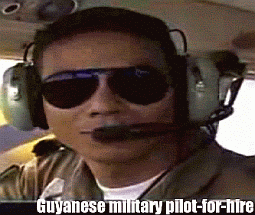 Brassington was the co-pilot on an ill-starred flight of a luxury Learjet (N351WB) busted by DEA Agents on a runway of Orlando Executive Airport carrying 43 lbs. of heroin.
Brassington was the co-pilot on an ill-starred flight of a luxury Learjet (N351WB) busted by DEA Agents on a runway of Orlando Executive Airport carrying 43 lbs. of heroin.
In the drug trade, 43 lbs. of heroin is what is known as “heavy weight.” Yet Brassington was never charged with a crime in the case. His name went unmentioned in law enforcement reports.
According to DEA affidavits and court testimony, Brassington flew co-pilot on 39 weekly round trips on Wally Hilliard’s Learjet in the year 2000 before getting busted. Each time the Learjet flew from Florida to Venezuela and back, before heading north to end at Teterboro Airport outside New York.
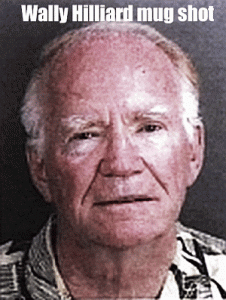 Wally Hilliard was the owner of the flight school where Mohamed Atta and Marwan Al-Shehhi began learning to fly on July 3, 2000. When Hilliard’s Learjet was busted on July 22, Atta was not even a month into his flight training at Hilliard’s flight school.
Wally Hilliard was the owner of the flight school where Mohamed Atta and Marwan Al-Shehhi began learning to fly on July 3, 2000. When Hilliard’s Learjet was busted on July 22, Atta was not even a month into his flight training at Hilliard’s flight school.
While it’s never been mentioned on a cable news show, evidence strongly indicates drug trafficking was one of the missions being pursued under the cover of running a flight school.
Perhaps coincidentally, Hilliard is a past recipient of the Green Bay Rotary Club’s Free Enterprise Award.
 If you’ve been unaware that the owner of the flight school where Mohamed Atta learned to fly was up to his neck in international drug trafficking, you’d be right to assume “fake news” has been around for a long time before Donald Trump ran for President.
If you’ve been unaware that the owner of the flight school where Mohamed Atta learned to fly was up to his neck in international drug trafficking, you’d be right to assume “fake news” has been around for a long time before Donald Trump ran for President.
You’re learning this now only because of special circumstances. As it happens, one of terror flight school owner Wally Hilliard’s employees who is involved in international drug trafficking has also, and perhaps coincidentally, been in business with the Russian oligarch currently under suspicion for helping to fix an American Presidential election.
Go figure.
Russia’s Aluminum Wars Go Global
It was a dust-up. A flare-up. A mini-Aluminum War? Perhaps. The picture was murky, like watching players in unmarked uniforms maneuver on a dimly-lit field at twilight. But, clearly, Reynolds Aluminum’s 30-year history in Guyana no longer cut any ice.
As has already been reported extensively, Oleg Deripaska fought and won three brutal wars of attrition during the 1990’s for control of a global strategic resource. Thousands died in what were called the Russian Aluminum Wars.
When they were over, Oleg Deripaska was the last man standing, as well as the biggest Russian Mobster on the planet.
That’s in Russia. In the West, the Aluminum Wars are still being contested.
Michael Francis Brassington’s “Cousin Winston” was Guyana’s Minister of Privatization. It’s a plum position— citing the Russian example—and one of the most lucrative jobs in the world.
 In Guyana, on April 28,2000, Winston Brassington issued a press release headlined “Guyana rejects bauxite bid from Reynolds Metals.”
In Guyana, on April 28,2000, Winston Brassington issued a press release headlined “Guyana rejects bauxite bid from Reynolds Metals.”
“The government has rejected a bid by the local subsidiary of U.S. aluminum firm Reynolds Metals Co. to buy out the state’s interest in a joint bauxite venture, officials announced.”
“Mike 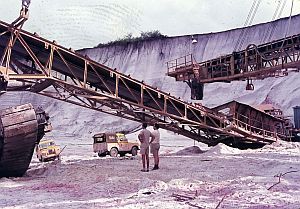 Brassington, head of the state’s privatization unit, said the government rejected the undisclosed bid because it was below officials’ price expectations.”
Brassington, head of the state’s privatization unit, said the government rejected the undisclosed bid because it was below officials’ price expectations.”
Reynold’s bauxite assets were nationalized “during a now-abandoned socialist experiment in the 1970s.” The company later returned to Guyana at the invitation of the government. Based in Richmond, Virginia, Reynolds Metals is best known to consumers as the manufacturer of Reynolds Wrap.
“That would be great”
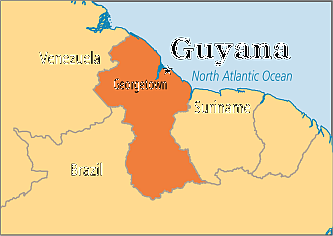 Three years later a dispatch out of Georgetown from the Associated Press reported the Guyanese government had just cut a billion dollar deal selling Guyana’s bauxite resources to Oleg Deripaska’s RUSAL, the world’s largest aluminum producer.
Three years later a dispatch out of Georgetown from the Associated Press reported the Guyanese government had just cut a billion dollar deal selling Guyana’s bauxite resources to Oleg Deripaska’s RUSAL, the world’s largest aluminum producer.
“After agreeing to buy 90 percent of shares in Guyana’s state-owned bauxite company, officials from Russian mining corporation RUSAL, which belongs to Russian aluminum baron Oleg Deripaska, discussed setting up an aluminum plant that could process 1 million tons of bauxite per year, according to Mike Brassington, the head of Guyana’s government privatization agency,” the AP reported.
“Brassington estimated it will cost $1 billion dollars to build the aluminum plant, but that it would “provide thousands of jobs” in Guyana, a South American country of 700,000 people.”
Brassington said, “That would be great.”
Enormous Changes at the Last Minute
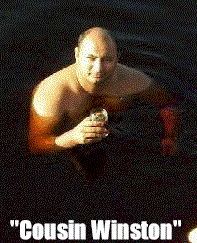 Somebody in Guyana finally figured out that all that bauxite was being turned into cash that wasn’t ending up in a Government of Guyana bank account.
Somebody in Guyana finally figured out that all that bauxite was being turned into cash that wasn’t ending up in a Government of Guyana bank account.
“Company pays $11.9 billion into Consolidated Fund over 11 years,” read the July 2, 2014 headline in popular Guyanese daily Kaieteur News.
“The National Industrial and Commercial Investments Limited (NICIL) headed by Winston Brassington lashed out through a statement contending reports driven in the media have no basis in fact.”
“NICIL makes it clear that it paid into the Consolidated Fund $11.9 billion dollars in dividends from the profits of its operations between 2002 and 2011. It insists it is a holding company owned by the Government of Guyana, and is expected to be and is, in fact, financially self sufficient.”
Then came one of those deliberately obfuscating paragraphs that suddenly makes everything clear.
“In 2002, NICIL and the Privatization Unit were operationally merged. A Management Cooperation Agreement (MCA) was signed appointing the Privatization Unit as exclusive manager of NICIL and reaffirming that privatization of NICIL’s assets would be conducted in accordance with the Privatization Policy Framework Paper of 1993 (White Paper on privatization).
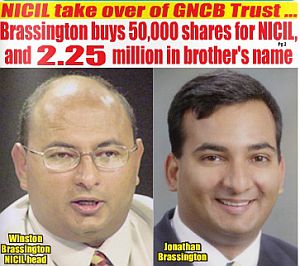 If you fall asleep reading about the “Privatization Policy Framework Paper of 1993,” you may miss the fact that The Ministry of Privatization, headed by Winston Brassington, was merged with the State Privatization Unit, led by Michael Brassington. And this fact was being cited as a reason for why the citizens of Guyana weren’t being robbed blind.
If you fall asleep reading about the “Privatization Policy Framework Paper of 1993,” you may miss the fact that The Ministry of Privatization, headed by Winston Brassington, was merged with the State Privatization Unit, led by Michael Brassington. And this fact was being cited as a reason for why the citizens of Guyana weren’t being robbed blind.
(Oh, to have been a fly on the wall during those negotiations!)
While most of Guyana’s 750,000 benighted citizens subsist well below the poverty line, the Brassington’s, already famously rich, had added another swiftly-flowing revenue stream, through the simple expedient of treating the country’s resources as their own.
Oleg Deripaska probably felt right at home.
Meanwhile, in another part of the jungle
 Beginning with a certain notoriety for flying co-pilot during the major drug bust the Orlando Sentinel called “the biggest heroin bust in Central Florida history,” Michael Francis Brassington became something of a celebrity in Guyana, the ultimate swampy backwater.
Beginning with a certain notoriety for flying co-pilot during the major drug bust the Orlando Sentinel called “the biggest heroin bust in Central Florida history,” Michael Francis Brassington became something of a celebrity in Guyana, the ultimate swampy backwater.
He moved in fast company. His father was the longtime CEO of Barclay’s Bank in the Caribbean. *Before that he’d been a courier— “bag man” is the less polite term—for the British Bank.)
Ten years later, when Brassington was sentenced to prison in the U.S. in the U.S. (for recklessly endangering passenger’s lives) newspapers and residents who had avidly followed coverage of his trial offered their thoughts.
“The Brassington family is well known in Guyana, a former British colony,” wrote one. “Michael Brassington’s great-grandfather came from Britain and established sugar plantations & estates throughout Guyana. The family is well-known for their wealth and power.”
“They come from a powerful old English Guyanese Family,” seconded another, “that in recent years joined forces with (current President of Guyana) Jagdeo. Their cousin Winston Brassington is an avid Jagdeo supporter. And the boys are involved in drug running with Winston and Gerry Gouveia.”
“These guys (Brassington and his brother Paul, a co-defendant) are the nephews of Peter D’Aguiar,” wrote another observer. “Their aunt is Peter D’Aguiar’s wife.”
“Uncle Peter,” as it happens, for decades controlled one of the three major political parties in Guyana, and maintained close ties with everyone’s favorite uncle, Uncle Sam. When the Agency called on him for assistance during a CIA-sponsored coup in Guyana in 1968, he was only too glad to help.
Mr. Bigski does New York
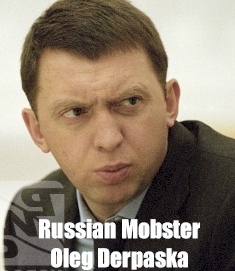 By 2005, Oleg Deripaska was richer than just about anyone before him in the history of the planet. Still, he had a problem. Because of his unsavory reputation, he couldn’t get into the U.S. It was like Jay Gatsby getting banned on Long Island.
By 2005, Oleg Deripaska was richer than just about anyone before him in the history of the planet. Still, he had a problem. Because of his unsavory reputation, he couldn’t get into the U.S. It was like Jay Gatsby getting banned on Long Island.
And the list of Deripaska’s enemies kept growing— unpaid former business partners, widows and orphans of murdered business partners—and now included the heads of beleaguered US aluminum giants, and their acolytes in the U.S. government, unhappy about Deripaska’s vise-like grip on key Third World bauxite mines.
It was time for a charm offensive.
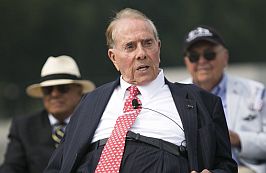 Deripaska started buying politicians, former politicians, and original gangsta K-Street lobbyists like Paul Manafort, who was far from being only U.S. political insider selling access to Russian Mobsters. John McCain, his campaign manager Rick Davis, even former Senator Bob Dole used his one good arm to hold out a begging bowl.
Deripaska started buying politicians, former politicians, and original gangsta K-Street lobbyists like Paul Manafort, who was far from being only U.S. political insider selling access to Russian Mobsters. John McCain, his campaign manager Rick Davis, even former Senator Bob Dole used his one good arm to hold out a begging bowl.
The charm offensive worked. In December 2005, Deripaska was issued a multi-entry U.S. visa. During his brief stay in the U.S. he signed a World Bank loan, spoke at a Carnegie Endowment meeting, and even attended a dinner at Harvard University, where, thanks to a generous donation, he was appointed to an international council.
Of course, Harvard will let anyone in if they’ve got enough money.
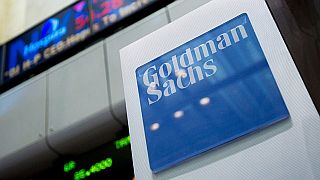 Despite its high points, Deripaska’s trip did not end well. Under the terms of his visa, he was forced to endure lengthy FBI questioning. The interview went badly. When Deripaska left the country, his visa was revoked over concerns about his ties to organized crime.
Despite its high points, Deripaska’s trip did not end well. Under the terms of his visa, he was forced to endure lengthy FBI questioning. The interview went badly. When Deripaska left the country, his visa was revoked over concerns about his ties to organized crime.
Years later, in 2009, the U.S. government lifted the ban to let him visit New York again. This time he was taking meetings with Goldman Sachs and Morgan Stanley. Apparently, that was good enough for US Customs.
Paul Manafort, a better-looking John Dean
Oleg Deripaska was Paul Manafort’s Olig-Daddy. When the men hooked up in 2004, Deripaska was richer, and doing more deals, than anyone alive.
The answer to how Oleg Deripaska came to know Paul Manafort, John McCain and Bob Dole lies, not in The Ukraine, but in Thee Ukraine. You can’t just say “Ukraine.” Nobody knows why.
Back in the winter of 2004, Russia’s next-door neighbor had a revolution, or a putsch, depending on your point of view. It was either a peaceful “Orange Revolution” which overthrew the corrupt Putin-backed Viktor Yanukovich, or a diabolical opening gambit of the Fourth Reich.
Yanukovich’s opponent was pro-Western opposition candidate Viktor Yushchenko. Yushchenko was poisoned, almost died, but held on to win. Afterwards, a murder investigation was launched against Yanukovich’s main backer, who then turned to Paul Manafort for a little image adjustment.
Here’s everything you need to know about Paul Manafort: He worked on the presidential campaign of the candidate whose side poisoned the other guy. Remember? The one with the hideous huge bumps on his face?
After that, Manafort’s work as Trump’s unpaid campaign chairman last year must have seemed a piece of cake, at least until Trump asked him to resign after revelations that Manafort orchestrated a covert Washington lobbying operation until 2014 on behalf of Ukraine’s ruling pro-Russian political party.
Under the Foreign Agents Registration Act, people who lobby in the U.S. on behalf of foreign political leaders or political parties must provide detailed reports about their actions. Reportedly, Manafort did not disclose any details of his lobbying work to the Justice Department.
If Manafort rolls (turns state’s evidence), as now seems likely, and eventually goes into witness protection to fend off Russian assassins…For the sake of anonymity, will they make him give up the pink ties?
Mother Russia
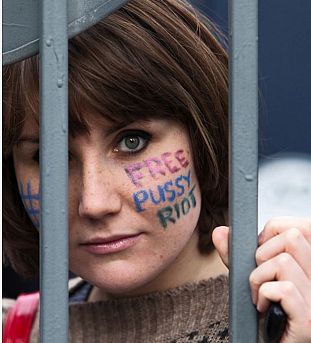 It’s a worldwide phenomena. When gangsters get really hugely, big-ly rich, big, they aren’t called gangsters anymore.
It’s a worldwide phenomena. When gangsters get really hugely, big-ly rich, big, they aren’t called gangsters anymore.
They’re called philanthropists.
And so it is with Oleg Deripaska. He has helped finance construction for Russia’s Sochi Winter Olympics in 2014, made headlines when he stepped in to fix the city’s stray dog problem after the Games began, and more.
Still, and apparently not tongue in cheek, a Toronto Globe and Mail profile in 2011 reports that Deripaska is not eager to publicize his numerous charities. He does still allows himself the occasional humble brag, however, as when he told reporters he’d contributed some $250 million between 2000-09, “largely to education projects. ”
He bankrolled major projects like the refurbishment of the Bolshoi Theater, and plowed money into the restoration of Russia’s neglected Orthodox churches. He wasn’t eager to tout those philanthropic acts either.
Except, maybe, on his own website, which claims he’s donated the equivalent of about $185 million. Anyone spreading around $185 million dollars can be indulged if he wants to speak a few heartfelt words of wisdom to those of us rocking the cheap seats.
Deripaska writes, but not memorably, on his website, “Motivated and active people create something to be proud of for generations and are changing our world and our lives for the better.”
Maybe someone should have just introduced him to Bono.
NEXT: What Michael Francis Brassington and Oleg Deripaska share a few things in common. Both receive fawning press coverage.

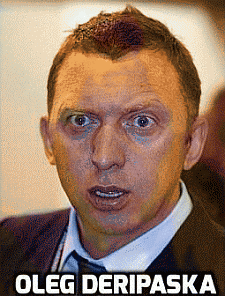

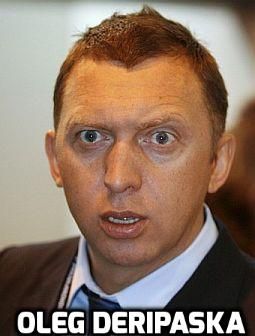
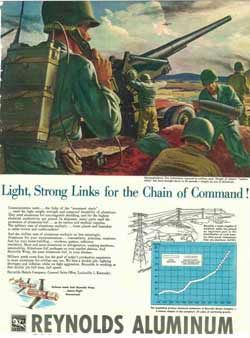
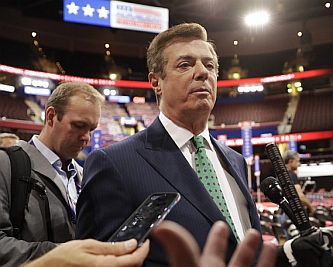
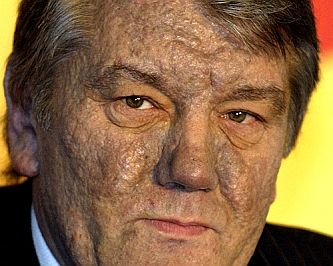
Hopsicker, please contact me.